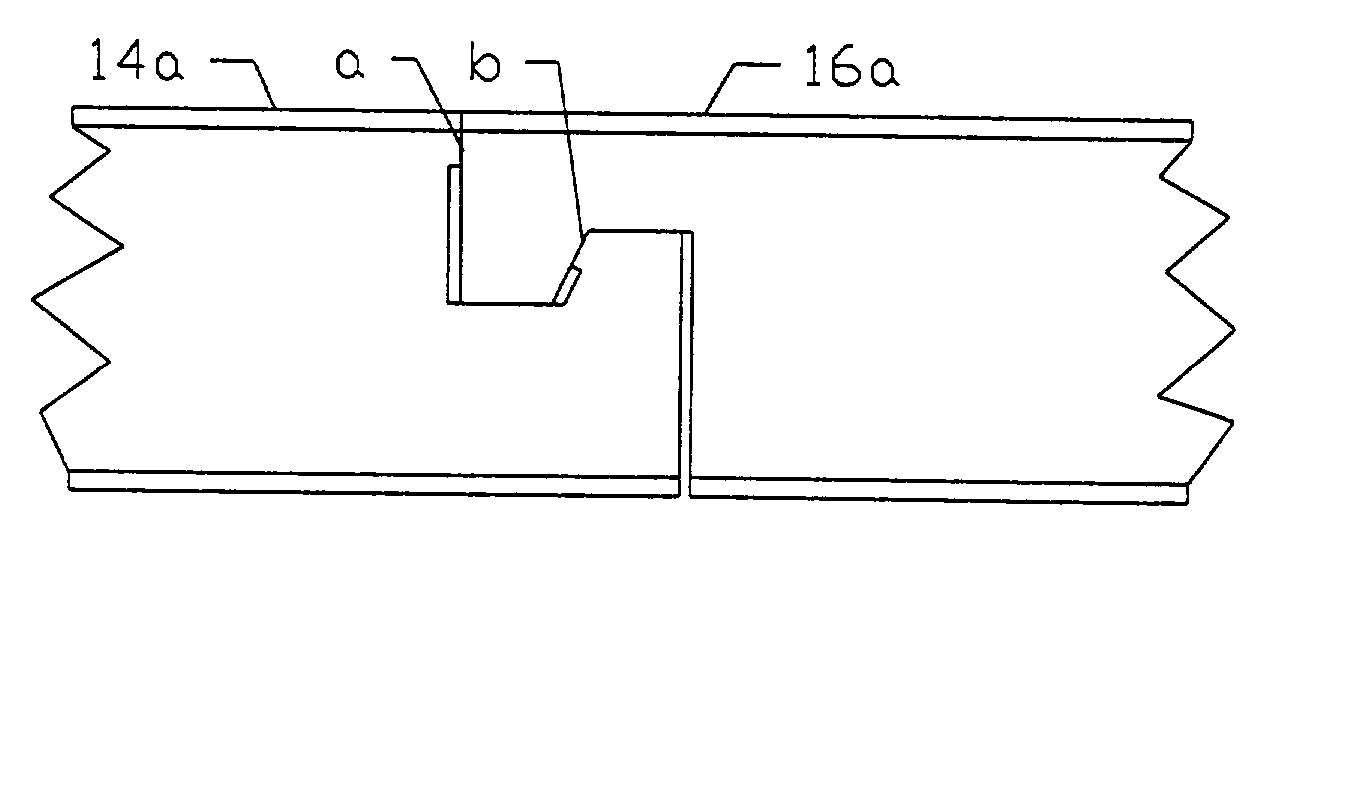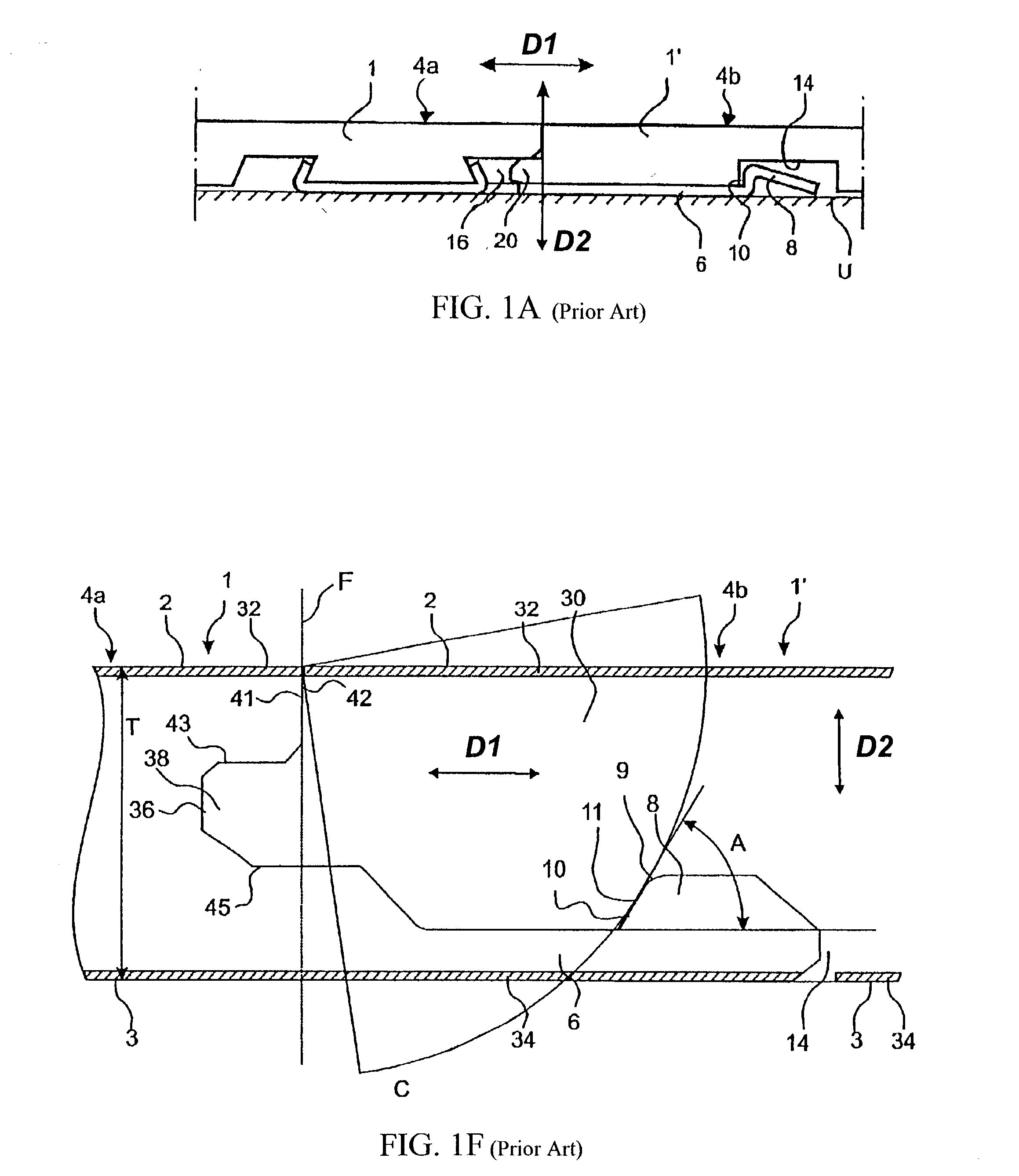Method and apparatus for interconnecting paneling
a technology of interconnection and paneling, which is applied in the direction of walls, constructions, flooring, etc., can solve the problems of unplanned expansion or shrinkage of the floor covering and/or sub, undesired gaps, and complex installation time-consuming, so as to reduce the amount of time and labor required, the effect of simple design
- Summary
- Abstract
- Description
- Claims
- Application Information
AI Technical Summary
Benefits of technology
Problems solved by technology
Method used
Image
Examples
Embodiment Construction
[0031] The present invention, as illustrated in FIGS. 2 and 3, provides panels 10 which can be interconnected to one another. In a specific embodiment, each panel can be identical to other panels. A panel 10 includes a top, a bottom, and joint elements along the sides of panel 10. A panel 10 has two forms of connecting means provided by joint elements that run along opposite edges of the same panel 10. According to the present invention, one form of connecting means is provided by a lateral motion limiting female joint element 14 and a lateral motion limiting male joint element 16. The other form of connecting means is provided by a tongue joint element 18 and a groove joint element 20. The joint elements may take the form of formations formed within the panel at manufacture. By providing different joint elements along opposite edges of the panel 10, the subject paneling system effectively achieves a system for connecting panels to one another in a quick and easy manner without the ...
PUM
 Login to View More
Login to View More Abstract
Description
Claims
Application Information
 Login to View More
Login to View More - R&D
- Intellectual Property
- Life Sciences
- Materials
- Tech Scout
- Unparalleled Data Quality
- Higher Quality Content
- 60% Fewer Hallucinations
Browse by: Latest US Patents, China's latest patents, Technical Efficacy Thesaurus, Application Domain, Technology Topic, Popular Technical Reports.
© 2025 PatSnap. All rights reserved.Legal|Privacy policy|Modern Slavery Act Transparency Statement|Sitemap|About US| Contact US: help@patsnap.com



